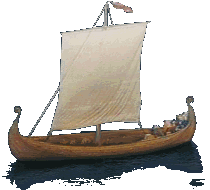
 EVENTS - 1000 A.D. to the present
EVENTS - 1000 A.D. to the present
EVENTS - 1000 A.D.

| Viking Millennium |
| National Museum of Natural History |
| In 1000 A.D., Vikings sailed across the stormy North Atlantic to the shores of North America and met its native inhabitants. As the Viking Millennium approaches, the Arctic Studies Center presents an introduction to this exciting period and explores new research helping us understand the Viking past. |
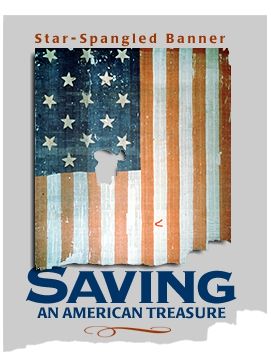
| The Star Spangled Banner - History of an American Treasure |
| National Museum of American History |
Maj. George Armistead, an officer during the War of 1812, needed a large U.S. flag to fly over Fort McHenry in Baltimore harbor. In 1813, he turned to a local flag maker. Armistead hired Mary Pickersgill and her 13-year-old daughter Caroline, both of Baltimore..... |
EVENTS -1840s
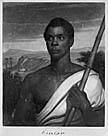
| The Amistad Case |
| National Portrait Gallery |
| On November 17, 1840, John Quincy Adams, then serving in Congress, visited thirty-six African men being held outside of New Haven, Connecticut. The Africans had mutinied on a Spanish slave ship and were being tried for piracy and murder on the high seas. The involvement of Adams, a former president and son of one of the Founding Fathers marked an important point in United States history. Here at last was an almost direct connection between the cause of antislavery and the nation's revolutionary principles of liberty and equality. |
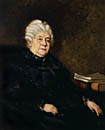
| The Seneca Falls Convention July 19-20, 1848 |
| National Portrait Gallery |
| The seed for the first Woman's Rights Convention was planted in 1840, when Elizabeth Cady Stanton met Lucretia Mott at the World Anti-Slavery Convention in London, the conference that refused to seat Mott and other delegates from America because of their sex. Stanton and Mott talked then of calling a convention to address the condition of women. Eight years later, it came about as a spontaneous event. |

| As Precious as Gold; Stories from the Gold Rush |
| National Postal Museum |
| The discovery of gold in the Canadian Klondike territory set off the 19th century's last great gold rush. Thousands of stampeders, most of them Americans, raced to the gold fields in Alaska and Canada. This exhibit examines the great Klondike Gold Rush and the unforgettable role of the mail carrier in providing contact between those so far from home and the families they left behind. |

| Milestones of Flight |
| National Air and Space Museum |
| The Milestones of Flight gallery exhibits some of the major "firsts" in aviation and space history. These are the machines that made the dream of flight possible; from the Wright Brother's Wright 1903 Flyer, to the Apollo 11 Command Module "Columbia" that carried the first men to walk on the Moon. |

| Posted Aboard R.M.S. Titanic |
| National Postal Museum |
| The tragic sinking of the R.M.S. Titanic has captivated our imaginations for decades. What few remember, however, is that Titanic was more than the fastest, longest, and most luxurious vessel of her time. She was also an R.M.S., or a Royal Mail Ship. Among those who lost their lives when the ship sank were five postal clerks. |
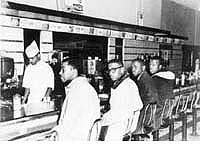
| Sitting for Justice |
| National Museum of American History |
| In 1960, if you were an African American, you were not allowed to sit here--the lunch counter of the F. W. Woolworth store in Greensboro, North Carolina. . On February 1, 1960, four African American students sat at this counter and tried to order lunch.... |
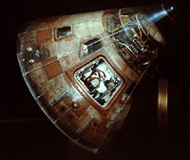
| Apollo to the Moon |
| National Air and Space Museum |
| The exhibit Apollo to the Moon tells the historic story of human exploration of the Moon by the United States. The defining moment of this journey occured on July 20, 1969, when astronaut Neil Armstrong, after descending the frail-looking ladder of the Lunar Module Eagle, took the first steps on the moon. Five more flights carried astronauts to the Moon, the last in 1972. No human has been there since. |

| Photographing History; Fred J. Maroon and the Nixon Years, 1970-74 |
| National Museum of American History |
| An intimate and dramatic view of the Nixon presidency and the Watergate hearings as seen through the lens of photojournalist Fred J. Maroon. More than an illustrated history of the Watergate crisis, the exhibition tells the story of a photojournalist who found himself documenting a remarkable series of historical events. |